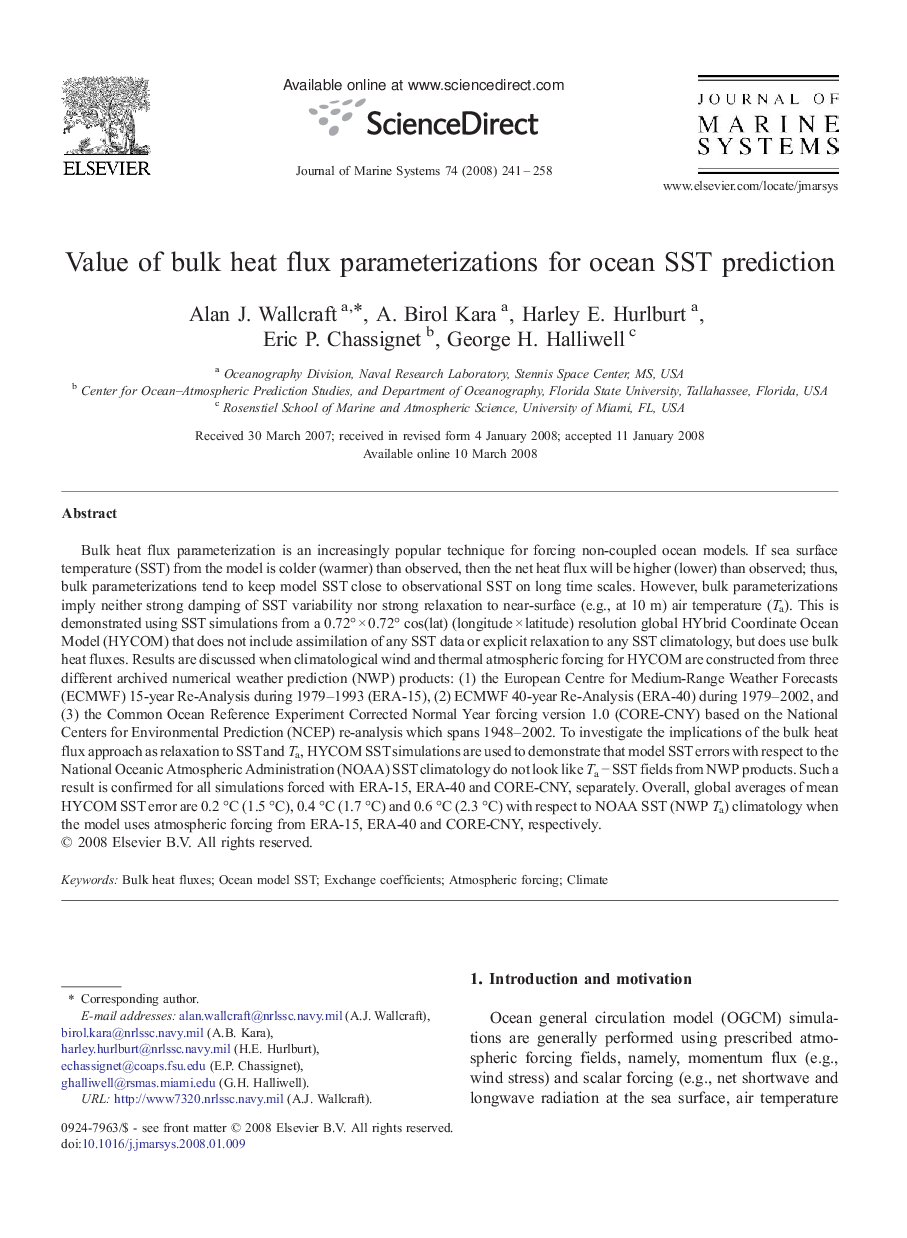| Article ID | Journal | Published Year | Pages | File Type |
|---|---|---|---|---|
| 4548999 | Journal of Marine Systems | 2008 | 18 Pages |
Bulk heat flux parameterization is an increasingly popular technique for forcing non-coupled ocean models. If sea surface temperature (SST) from the model is colder (warmer) than observed, then the net heat flux will be higher (lower) than observed; thus, bulk parameterizations tend to keep model SST close to observational SST on long time scales. However, bulk parameterizations imply neither strong damping of SST variability nor strong relaxation to near-surface (e.g., at 10 m) air temperature (Ta). This is demonstrated using SST simulations from a 0.72° × 0.72° cos(lat) (longitude × latitude) resolution global HYbrid Coordinate Ocean Model (HYCOM) that does not include assimilation of any SST data or explicit relaxation to any SST climatology, but does use bulk heat fluxes. Results are discussed when climatological wind and thermal atmospheric forcing for HYCOM are constructed from three different archived numerical weather prediction (NWP) products: (1) the European Centre for Medium-Range Weather Forecasts (ECMWF) 15-year Re-Analysis during 1979–1993 (ERA-15), (2) ECMWF 40-year Re-Analysis (ERA-40) during 1979–2002, and (3) the Common Ocean Reference Experiment Corrected Normal Year forcing version 1.0 (CORE-CNY) based on the National Centers for Environmental Prediction (NCEP) re-analysis which spans 1948–2002. To investigate the implications of the bulk heat flux approach as relaxation to SST and Ta, HYCOM SST simulations are used to demonstrate that model SST errors with respect to the National Oceanic Atmospheric Administration (NOAA) SST climatology do not look like Ta − SST fields from NWP products. Such a result is confirmed for all simulations forced with ERA-15, ERA-40 and CORE-CNY, separately. Overall, global averages of mean HYCOM SST error are 0.2 °C (1.5 °C), 0.4 °C (1.7 °C) and 0.6 °C (2.3 °C) with respect to NOAA SST (NWP Ta) climatology when the model uses atmospheric forcing from ERA-15, ERA-40 and CORE-CNY, respectively.
